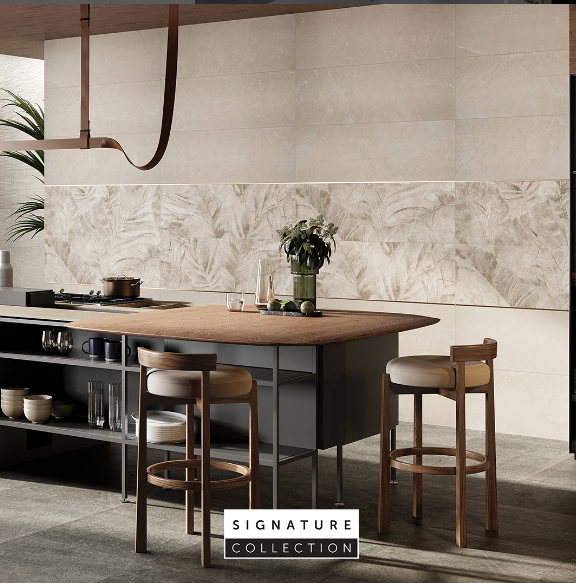Dive Deep into Tiles; Ceramics and Porcelain

Welcome to the vibrant and dazzling world of tiles! This marks the inception of a series that promises to be your go-to source for everything tiles. I’ll be your dedicated guide on this exciting journey.
Whether you’re on a mission to revitalize your living space, embarking on a home-building adventure, or simply captivated by the world of tiles, you’ve landed in the right spot. Congratulations, and get ready to immerse yourself in the intricate universe of tiles!
Let’s kick off by exploring the multitude of tile types. Believe me, there are MANY! To make this exploration less overwhelming, I’ve crafted an easy-to-follow visual guide to help you find your way. Take a look!
All the listed “types” represent the diverse materials that go into crafting tiles. From clay-based tiles to natural stone, cement-based, composite-material, and other innovative options like glass, cork, metal, and vinyl (PVC) tiles, the possibilities are vast. This journey will take us through each type, unraveling their secrets, uses, manufacturing processes, and more in upcoming articles.
Marble Tiling Unveiled
In today’s article, our spotlight is on the workhorse of tiles: clay-based tiles. Stay tuned for our next article in this series, where we’ll delve into the other captivating types!
“Why dedicate an entire blog entry to clay-based tiles?” you might wonder. Well, the truth is, clay-based tiles are the chameleons of the tile world, seamlessly blending into every corner of your life!
Under the umbrella term of “clay-based tiles,” two primary categories steal the show: ceramic tiles and porcelain tiles. Let’s take a plunge into this fascinating world!
Ceramic Tiles: Unmasking the Six Distinct Types

Ceramic tiles are the unsung heroes, encompassing six unique types:
Clay Tiles
Glazed Tiles
Zellige (or Moroccan) Tiles
Terracotta Tiles
Quarry Tiles
Saltillo (or Mexican) Tiles
But what distinguishes ceramic from porcelain? Both share the clay origins and kiln firing, yet porcelain, with its refined clay and higher firing temperatures, emerges as the heavyweight. Porcelain tiles boast superior density, durability, and less porosity, making them perfect for high-traffic and outdoor areas. Meanwhile, ceramic tiles shine in decorative indoor applications and light to moderate foot traffic areas.
Porcelain (top) versus Ceramic (bottom)

Now, let’s focus on ceramics! Ever wondered about the meaning behind “ceramic”? It literally translates to “made of clay and hardened by heat,” as per the New Oxford American Dictionary. This term encapsulates the process of crafting non-metal solid ceramic tiles through kiln firing.
Understanding ceramics involves three key criteria: composition, surface finish, and uses. Composition relates to the type of clay; surface finish signifies whether the tile is glazed or unglazed and uses describe their typical applications.
Ceramic Tiles: Unmasking the Six Distinct Types

Ceramic tiles are the unsung heroes, encompassing six unique types:
Clay Tiles
Composition: Natural clay
Surface Finish: Unglazed
Uses: Mainly used for roofing
Glazed Tiles
Composition: Ceramic (clay) body with a glaze on top
Surface Finish: Glazed
Uses: Indoor walls, floors, decorative, wide design range
Zellige (Moroccan) Tiles
Composition: Natural clay, usually locally sourced
Surface Finish: Glazed and Decorative mosaic-style
Uses: Walls, floors, colorful
Terracotta Tiles
Composition: Rich in iron and other minerals
Surface Finish: Natural clay, specifically durable
Uses: Flooring, roofing, wall cladding, backsplashes, fireplaces, art and sculptures, decoration
Quarry Tiles
Composition: Can be glazed or unglazed
Surface Finish: –
Uses: Bathrooms, restaurants and kitchens, garden paths, stair treads, commercial spaces
Saltillo (Mexican) Tiles
Composition: Fired red/brown clay, handmade Mexican clay
Surface Finish: Typically, unglazed
Uses: Indoor/outdoor floors, irregular shape
Porcelain Tiles
Composition: Refined clay, fired at high temperatures, fully vitrified
Surface Finish: Various, including glazed or unglazed.
Uses: Indoor/outdoor applications, high-traffic areas.
To sum up, ceramic tiles stand out as the most common and versatile types, fitting seamlessly into both indoor and outdoor spaces, whether high-traffic or low-traffic. Save this table and definitive guide for future reference, and stay tuned for our next article, where we’ll take a deeper dive into the captivating world of ceramic tiles. See you in the next blog!






